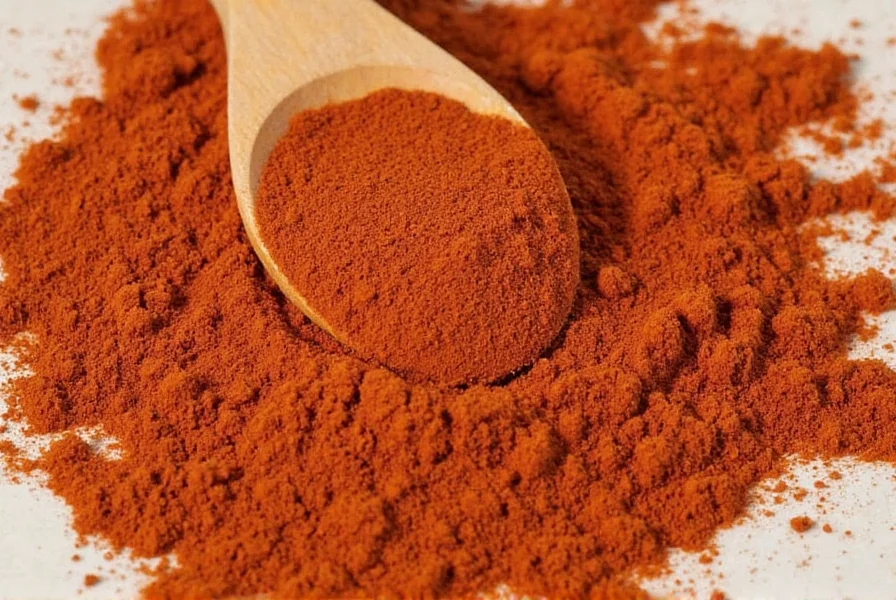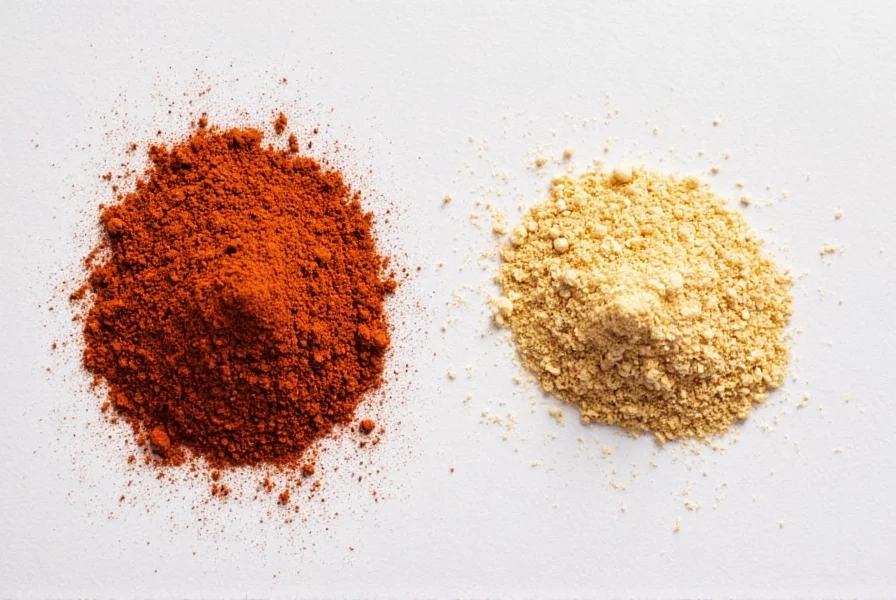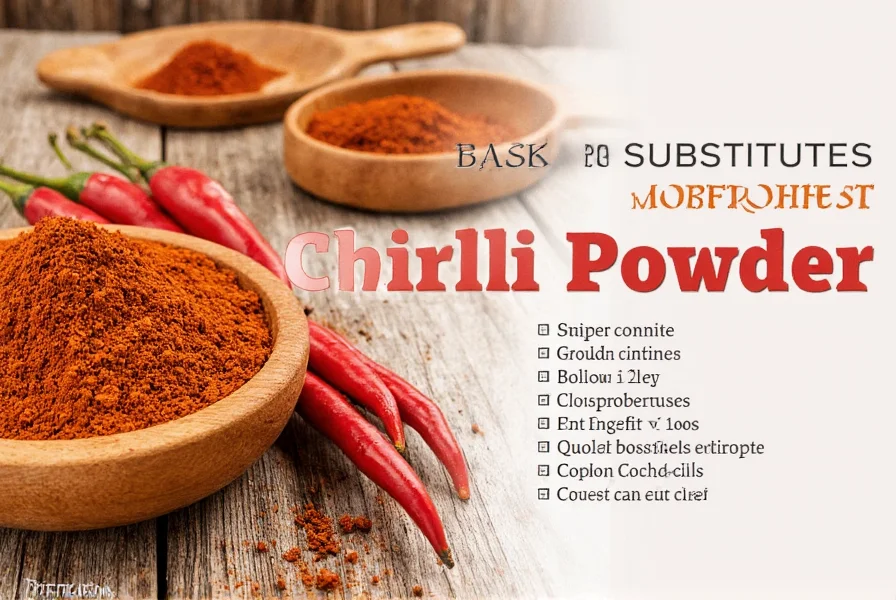Ancho chili powder forms the backbone of many authentic Mexican recipes, prized for its rich, slightly sweet flavor with subtle notes of dried fruit and coffee. When you need a reliable ancho chili powder substitute for your cooking, understanding the flavor profile and heat level becomes essential for maintaining recipe integrity. This guide provides practical alternatives that work across various dishes, from mole sauces to chili con carne.
Understanding Ancho Chili Powder Characteristics
Ancho chili powder comes from dried poblano peppers, offering a mild heat level (1,000-2,000 Scoville units) with complex flavor notes. Unlike regular chili powder blends that often contain cumin and garlic, pure ancho chili powder delivers a singular, earthy-sweet profile that's fundamental to authentic Mexican cuisine. When seeking an ancho chili powder alternative, consider both heat level and flavor complexity to maintain your dish's intended character.
Top Substitutes for Ancho Chili Powder
Chipotle Chili Powder
Chipotle powder provides the closest flavor match for many recipes requiring ancho chili powder substitutes. Made from smoked jalapeños, it offers similar earthiness with added smokiness. Use a 1:1 ratio when substituting in recipes like enchilada sauce or chili. This ancho chili powder alternative works particularly well in barbecue rubs and slow-cooked dishes where the smokiness enhances rather than overwhelms.

Guajillo Chili Powder
Guajillo powder serves as an excellent ancho chili powder substitute in traditional Mexican cooking. With a similar heat level but brighter, tangier notes, it works perfectly in 1:1 substitution for salsas, marinades, and adobo sauces. Many authentic Mexican cooks consider guajillo and ancho powders interchangeable in regional recipes, making this substitution particularly valuable for maintaining cultural authenticity.
Smoked Paprika with Cayenne
When you need an ancho chili powder alternative that's accessible in most kitchens, combine 1 teaspoon smoked paprika with 1/8 teaspoon cayenne pepper. This blend mimics ancho's earthy depth while providing mild heat. Ideal for Tex-Mex dishes or when creating a quick ancho chili powder substitute for taco seasoning, this combination delivers reliable results without specialty ingredients.
Regular Chili Powder Blend
Standard chili powder (a blend typically containing cumin, garlic powder, and oregano) can substitute for ancho chili powder in a pinch, but requires ratio adjustment. Use 3/4 teaspoon of regular chili powder for every 1 teaspoon of ancho required. This ancho chili powder alternative works best in hearty dishes like chili con carne where additional spices complement rather than compete with the intended flavor profile.
| Substitute | Heat Level | Flavor Notes | Substitution Ratio | Best For |
|---|---|---|---|---|
| Chipotle Powder | Moderate (2,500-8,000 SHU) | Smoky, earthy, slightly sweet | 1:1 | Enchilada sauce, chili, barbecue rubs |
| Guajillo Powder | Mild (2,500-5,000 SHU) | Tangy, berry-like, floral | 1:1 | Mole sauces, salsas, adobo marinades |
| Smoked Paprika + Cayenne | Mild to Moderate | Earthy, smoky, slightly sweet | 1 tsp paprika + 1/8 tsp cayenne | Taco seasoning, Tex-Mex dishes |
| Regular Chili Powder | Mild to Moderate | Complex blend with cumin notes | 3/4:1 | Chili con carne, hearty stews |
Choosing the Right Substitute by Dish Type
Selecting the best ancho chili powder substitute depends on your specific recipe. For mole poblano, guajillo powder preserves authenticity better than other alternatives. When making ancho chili powder substitute for enchiladas, chipotle powder adds welcome smokiness that complements the dish's richness. For everyday cooking where you need a quick ancho chili powder alternative, the smoked paprika blend delivers consistent results without specialty ingredients.
Avoiding Common Substitution Mistakes
Many home cooks make critical errors when substituting ancho chili powder. Never use cayenne pepper alone as an ancho chili powder substitute—it lacks the complex flavor and delivers excessive heat. Similarly, avoid using hot paprika without adjustment, as it won't replicate ancho's distinctive earthiness. When creating an ancho chili powder alternative for delicate sauces, always start with less substitute and adjust gradually to prevent overwhelming other flavors.
Creating Your Own Ancho-Style Blend
For those seeking the most accurate ancho chili powder substitute, create a custom blend: combine 2 tablespoons smoked paprika, 1 tablespoon sweet paprika, 1 teaspoon garlic powder, and 1/4 teaspoon cumin. This mixture closely approximates pure ancho powder's flavor profile and works as a reliable ancho chili powder alternative across most recipes. Store your homemade blend in an airtight container for up to six months to maintain optimal flavor.

FAQ: Ancho Chili Powder Substitutes
Can I use regular chili powder instead of ancho chili powder?
Yes, but adjust the ratio—use 3/4 teaspoon of regular chili powder for every 1 teaspoon of ancho required. Regular chili powder contains additional spices like cumin and garlic that alter the flavor profile, so this ancho chili powder substitute works best in robust dishes like chili con carne rather than delicate sauces.
What's the best ancho chili powder substitute for mole sauce?
Guajillo chili powder serves as the most authentic ancho chili powder alternative for traditional mole sauces. Use a 1:1 substitution ratio as guajillo provides similar mild heat with complementary tangy notes that maintain the sauce's complex flavor profile essential to authentic Mexican cuisine.
How do I substitute ancho chili powder in enchilada sauce?
For enchilada sauce, chipotle chili powder makes the best ancho chili powder substitute at a 1:1 ratio. The smokiness enhances the sauce's depth, particularly in red enchilada recipes. If you prefer less heat, use 3/4 teaspoon chipotle powder per teaspoon of ancho required while adding 1/4 teaspoon smoked paprika to maintain flavor complexity.
Can I make my own ancho chili powder from fresh poblanos?
Yes, you can create homemade ancho chili powder by drying fresh poblanos until brittle, then grinding them into powder. This process requires several days for proper drying but yields the most authentic ancho chili powder substitute. Store in an airtight container away from light for optimal flavor retention up to six months.
What's the difference between ancho chili powder and regular chili powder?
Pure ancho chili powder contains only ground dried poblanos, offering a singular earthy-sweet flavor with mild heat. Regular chili powder is a blend typically containing ancho powder plus cumin, garlic powder, and oregano. This distinction matters when substituting, as regular chili powder introduces additional flavors that may alter your dish's intended profile.











 浙公网安备
33010002000092号
浙公网安备
33010002000092号 浙B2-20120091-4
浙B2-20120091-4